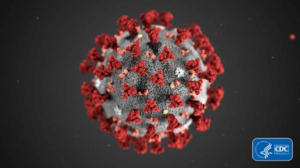This week we continue to follow the spread of the coronavirus. There is so much great reporting including what is one of the best overviews that we’ve seen of the numbers and what they all might mean.
Like most everyone, we will continue to follow the coverage of the outbreak, including an interesting illustration of how the virus hijacks cells that ran this week. We’re also reading up on some new research on the first migrants to the Americas, Neanderthal children, an experimental drug for Huntington’s, and a book about DNA testing upending a writer’s family.
Check them out.
Earliest Americans
Our understanding of the populating of the Americas is continuing to expand. The first people to reach the Americas may have come by sea, according to the latest research. They may have arrived 16,000 years ago or 3,000 years earlier than we previously believed. According to a study published recently in Science, radiocarbon dating of charcoal and bone fragments found along an Idaho river are altering what we once thought of the earliest Americans. In essence, they likely came by sea and then up rivers to populate inland areas. Previously scientists believed that the Clovis people were the first to populate the Americas, arriving about 13,000 years ago.
Brutish, Short and Cold

Life may or may not have been nasty, brutish, and short of Neanderthals, but new research shows that it was indeed cold and challenging. Researchers from the University of Brisbane in Australia used the enamel of teeth recovered from the bones of two Neanderthal children excavated from a cave in France to piece together some details of their lives. Published in the journal Science, the study found that these children endured harsher winters when compared to teeth of modern human children who lived in Europe about 5,000 years ago. The Neanderthal children were also exposed to lead, which makes this study the earliest known documentation of lead exposure among hominins.
Haunted by a Gene
In a profound article in the New York Times, the reporter Denis Grady tells the story of Nancy Wexler, Ph.D., a noted researcher, and professor of neuropsychology at Columbia University. Wexler has been studying Huntington’s, a rare and devastating fatal disease. Wexler saw the illness claim her mother’s life. That pushed her to research the illness, and over the last few decades, she’s been involved in research of an extended Venezuelan family with Huntington’s. More recently she’s revealed that she too suffers from the condition. Her work and the work of others have helped to contribute to the development of an experimental drug by Roche to treat the disease. Her story is also included in a segment of the PBS documentary The Gene: An Intimate History airing in April.
Lost Family
Regardless of whether or not you’ve taken a DNA test, it’s no secret that taking a DNA test has changed everything for many. The New York Times published a review this past week on a new book called “Lost Family: How DNA testing is upending who we are,” where author Libby Copeland explores the consequences — intended or not — of people’s decision to send in saliva samples to have their DNA tested.
Hijackers
In a series of fascinating graphic illustrations, The New York Times depicts the process of how the spiky-looking novel coronavirus hijacks cells, inserts a snippet of its viral RNA and then causes the infected cell to spread millions of copies of the virus into the human body. But the explainer ends on a hopeful note: The last visual shows how soap molecules destroys the virus by prying it apart.